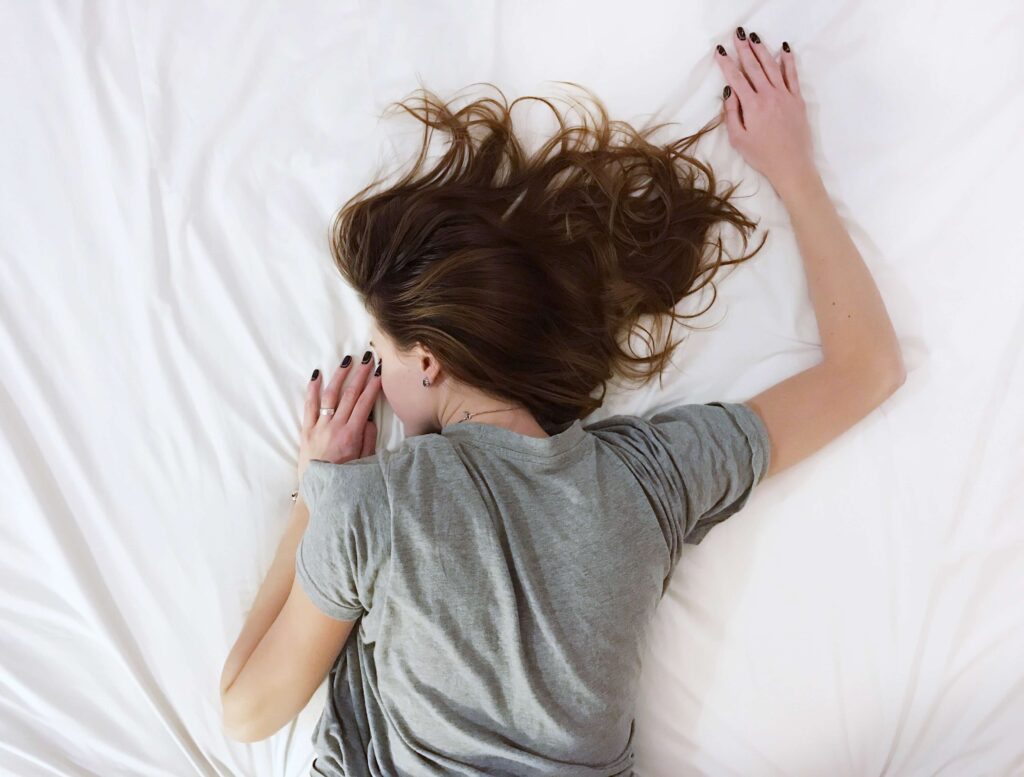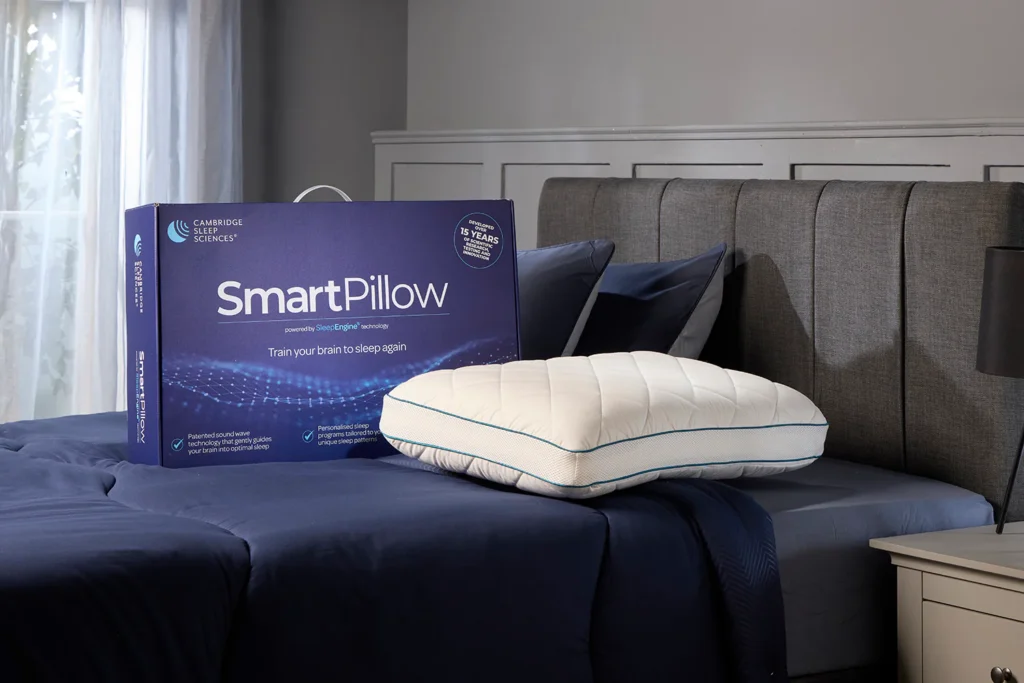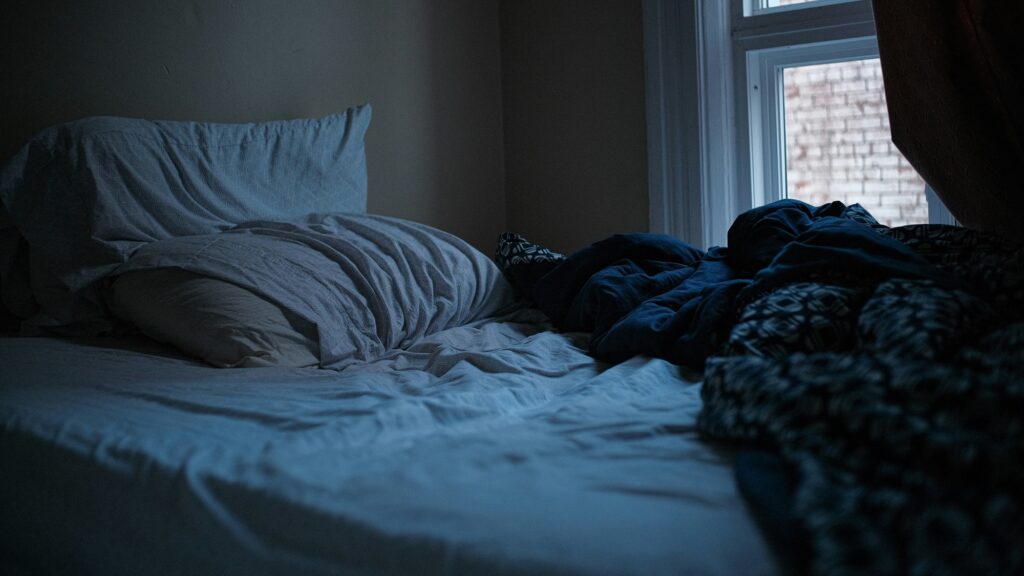What is thermoregulation?
Thermoregulation is defined as the mechanism that allows your body to maintain its core internal temperature. All thermoregulation mechanisms are designed to return your body to homeostasis, or a state of equilibrium. Human beings have a normal core internal temperature of around 37 degrees Celsius (98.6 degrees Fahrenheit). This is the optimal temperature at which all of the human body’s systems function.
Maintaining this temperature within a range of 1–2 degrees is the primary function of thermoregulation, and it is crucial to all of our organs working. Without thermoregulation, the human body would cease to function.
How does thermoregulation work in your body?
Thermoregulation has three mechanisms: afferent sensing, central control and efferent (conducted outwards from the nerves) responses. Afferent and efferent neurons refer to various types of neurons that make up the sensory and motor divisions of the peripheral nervous system, respectively. There are receptors for both heat and cold throughout the human body. Afferent sensing works through these receptors to determine if the body core temperature is too hot or cold. The hypothalamus is the central controller of thermoregulation. There is also the efferent behavioural component that responds to fluctuations in body temperature, conducting heat outwards. For example, if a person is feeling too warm, the normal response is to remove an outer article of clothing. If a person is feeling too cold, they choose to wear more layers.
Efferent responses also consist of automatic responses by the body to protect itself from extreme changes in temperature.
Basically, when your internal temperature changes, sensors in your central nervous system (CNS) send messages to the hypothalamus. In response, it sends signals to various organs and systems in the body, which trigger different mechanisms.
If your body needs to cool down, these include:
- Sweating: Your sweat glands release sweat, which cools your skin as it evaporates. This helps lower your internal temperature.
- Vasodilatation: The blood vessels under your skin become wider and increase blood flow from your warm inner body to your skin, where it is cooler. This lets your body release heat through heat radiation.
If your body needs to warm up, these might be:
- Vasoconstriction: The blood vessels under your skin become narrower. This decreases blood flow to your skin, retaining heat near the warm inner body.
- Thermogenesis: Your body’s muscles, organs and brain produce heat in a variety of ways. For example, muscles can produce heat by shivering.
- Hormonal thermogenesis: Your thyroid gland releases hormones to increase your metabolism. This increases the energy your body creates and the amount of heat it produces.
The brain, specifically the hypothalamus, controls thermoregulation. If it senses internal temperatures growing too hot or cold, it will automatically send signals to the skin, glands, muscles and organs. For example, if the body is generating heat during high-level exercise or if the external ambient temperature is elevated enough to cause a rise in the core temperature, afferent signals to the hypothalamus result in efferent signals to the cells of the skin to produce sweat. Thermoregulatory responses can be either behavioural—for instance, changes in posture or location with regard to the environment—or autonomic, which means internal processes that lead to vasodilation, thermogenesis and so on (like sweating, shivering, etc.)
Role of thermoregulation in sleep
Thermoregulation plays an important role in enabling sleep, and the mechanisms that make this possible are also tied to the hypothalamus and the nervous system. Thermoregulatory behaviour prior to sleeping is a core part of maintaining energy balance.
Thermoregulation isn’t just about keeping you alive; it is also closely associated with the circadian rhythm. Both create the optimal resting temperature when they are in sync, and signal the brain when it’s time to rest.
For starters, our bodies make a few changes—such as slowing down metabolism and stimulating other heat loss mechanisms— to lower our core temperature prior to and during sleep. Studies suggest this slight drop in core temperature (of our abdominal, cranial and thoracic regions) is an essential part of falling and staying asleep, as it helps stimulate drowsiness. This temperature drop is generally a fraction of a degree or slightly more. It typically occurs throughout the late afternoon and evening hours leading up to bedtime and remains in place throughout sleep. When these internal temperatures begin to decline, we are likely to engage in nesting behaviours that lead us to choose sleep, i.e., getting a blanket, lying down, breathing steadily. When we dissociate from this pattern, we generally experience a harder time falling asleep.
Thermoregulation also plays a role in waking us up. As morning arrives, our bodies start to naturally raise our body temperature. This helps to rouse us and makes us more alert once we’re out of bed. If the connection between a slightly higher but still normal body temperature and alertness seems counter-intuitive, consider how energised you feel immediately after exercising. Although there are other factors involved, one reason for this is that your temperature is slightly elevated.
These natural body temperature fluctuations—of cooling before sleep and warming up before waking—are intimately linked to our body’s circadian rhythms. When functioning properly, these rhythms follow an approximately 24-hour cycle that helps us sustain a regular sleep–wake schedule.
Sleep stages and thermoregulation
Not only are body temperature and thermoregulation intimately linked with falling asleep, they also interact with the different stages of sleep in varying ways. There are two major kinds of sleep: REM (rapid eye movement) and NREM (non-REM sleep). NREM sleep is of various kinds: N1, which is the ‘dozing off’ stage, N2, where muscles begin to relax and the start of slow wave activity is observed, and N3, which is slow wave or deep sleep. According to the American Academy of Sleep Medicine, these stages or cycles of sleep constitute our ‘sleep architecture’.
Although sleep onset and the regulation of sleep transitions may involve multiple nuclei in the brain, one area has been historically associated with NREM onset. The preoptic hypothalamus is a key site for NREM initiation and is also considered an integrator for thermoregulatory information, including cold and warm-defence through the mechanisms discussed earlier. When you go into NREM periods, the brain also cools. Following this, in periods of REM sleep, thermoregulation is limited.
Once we’ve fallen asleep, our bodies stop working quite as hard to respond to external temperature fluctuations. In fact, during REM sleep, our bodies nearly stop regulating temperature altogether. This limits normal temperature-regulating mechanisms, such as sweating or shivering. This means we’re more susceptible to being adversely affected by external temperatures when we’re asleep than we are when we’re awake. For instance, we’re likely to heat up or feel cold much more quickly when we’re in the stage of REM sleep than during waking hours.
A variety of factors may influence your body’s ability to regulate its core temperature while you sleep. For instance, the following may lower your internal body temperature:
- Alcohol or drug use
- Cold weather or low bedroom temperatures
- Illness
- Metabolic conditions such as hypothyroidism
Meanwhile, these may increase your internal body temperature:
- Digestion
- Exercise
- Fever or other illness
- Hot weather or high bedroom temperature
- Stress
All of these factors can interfere with your ability to enjoy a quality night of sleep, which helps explain why there’s sometimes a link between sleep deprivation and thermoregulation. A higher core body temperature has been associated with a decrease in restorative slow wave sleep, and temperature regulation has shown to decrease most during REM sleep. Getting a sufficient amount of all the stages and cycles of sleep is important in maintaining homeostasis and, therefore, in thermoregulation. Another reason that thermoregulation and sleep are so intimately linked is that sleep is evolutionarily related to conserving energy expenditure, and one of the ways this occurs is by reducing the temperature sensitivity we usually feel when we are awake.
Temperatures and sleep
Since thermoregulation is essential for functioning and intimately tied to sleep onset and the stages of sleep, the ambient temperature during sleep is an important factor that could affect quality of sleep.
Hot temperatures and sleep
Exposure to hot temperatures while you’re trying to sleep can make it harder to fall and stay asleep and reduces sleep quality overall. Research suggests heat exposure can affect sleep in several ways. These include:
- Increases in the number of night-time wake-ups (or sleep disturbances)
- Decreases in the duration of REM sleep. As noted above, the body’s ability to regulate temperature declines during REM sleep. Thus, if we’re feeling excessively hot while sleeping, our bodies may be less likely to drift into REM sleep because they can sense that these temperature-regulating mechanisms are needed.
- Decreases in the duration of slow wave sleep, which is a sleep stage in which the brain’s electrical wave activity slows down to give the brain a rest.
- Disruption of a person’s circadian rhythms, which may escalate sleep disturbances moving forward.
- Potential increases in breathing difficulties among people with sleep apnea.
Most research suggests these effects are more likely to occur early on in someone’s sleep instead of later in the night. This may be because the wake-ups in the early stages make the person feel sleepier, which can override the heat-induced disturbances later in the night. The same research also suggests that pairing high temperatures with high levels of humidity can exacerbate the sleep disturbances described above. As with regular heat, humidity is most likely to disrupt a person’s sleep in the earlier segment of the night.
The effects of hot temperatures on sleep are so significant that research suggests the rising temperatures brought on by climate change are likely to have global ramifications for sleep quality. This could have significant consequences for public health, given that sleep deprivation is associated with a wide range of health issues including diabetes, heart disease, anxiety, depression and even a greater mortality risk. Elderly and low-income communities are especially vulnerable to hot temperatures, because they may lack the physiological or financial resources necessary to counteract rising temperatures.
Cold Temperatures and Sleep
Just as hot temperatures can have a negative impact on a person’s sleep quality, so can excessively cold temperatures, making it harder to fall and stay asleep and inhibit sleep quality overall. Research cited above as well as a review of various studies found that cold may influence sleep in the following ways:
- Decreases in the duration of REM sleep. As noted above, this may be because our bodies can sense that temperature-regulating mechanisms are necessary. Because these mechanisms aren’t active during REM sleep, this may help explain why our bodies are less likely to slip into REM sleep when we’re feeling excessively cold.
- Decreases in the duration of slow wave/ deep sleep.
- Increases in sleep disturbances, which are more likely to occur in the latter segments of the sleep cycle.
- Potential increases in symptom severity for people with insomnia.
That being said, the appropriate use of blankets and clothing may mitigate or even eliminate these issues. The thermoregulatory response can usually help with averting hypothermia or alerting the body’s mechanisms to temperature changes.
Ideal Sleep Temperature
Many experts agree that the bedroom temperature most ideal for high-quality sleep is anywhere between 16 and 18°C (60°F to 65°F), while others advocate for a bedroom temperature that rests somewhere between 18 and 24°C (65°F to 72°F). Overall, a range between 16 to 24 °C (60-72 °F) is a good range.
Why the relatively low temperature recommendations? This is largely because your body temperature needs to drop a bit before your body is able to successfully drift off to sleep. Cooler bedroom temperatures facilitate this drop and prevent you from overheating (or waking up) once you’ve fallen asleep.
However, comfort ultimately trumps specific temperature recommendations. If 16 to 18°C (60°to 65°F) feels uncomfortably cold to you and you’re shivering under your comforter, you’re not going to enjoy the quality sleep you crave. Therefore, the ideal bedroom temperature may vary from person to person, depending on factors like age, gender, climate and rate of metabolism. For instance, babies tend to sleep better at slightly higher temperatures. Don’t be afraid to experiment with different thermostat settings until you’ve found the temperature range that best facilitates restful sleep.
Sleep deprivation and temperature regulation
Sleep quality can be severely reduced due to skin temperature, rapid temperature change or sweating. So thermoregulation isn’t just about comfort; if it’s not functioning properly you could experience sleep deprivation, with consequences that extend further than bags under the eyes and drowsiness.
Sleep architecture is highly dependent on temperature and environmental factors, but the consequence of total sleep loss is a radical alteration of thermoregulation and energy balance. In rats, chronic total-sleep deprivation and selective REM deprivation leads to profound physiological effects and eventually death. In the early stages, an increase in metabolic function was observed in these rats, including core body temperature, and with it an increase in food consumption. However, the temperature rise was quickly reversed and the rats progressively developed hypothermia. They also moved to warmer parts of a temperature gradient as their sleep deprivation deepened. This may be an energy conservation strategy, reducing thermal load, increasing appetite and simultaneously cooling the body.
In humans too, sleep deprivation appears to either increase the metabolic requirements of the animal. Over time, prolonged sleep deprivation facilitates excessive heat loss, perhaps through over activation of NREM-initiating circuits that induce vasodilation. This occurs because sleep deprivation disrupts the coordination of fluctuations in regulating body temperature. Studies have found that following sleep deprivation, you may feel more tired during exercise because you missed out on some muscle repair during sleep; you could also struggle to regulate temperature the next day, making you tire faster, and potentially decreasing energy, stamina and athletic performance. The separation of middle- and lower-body temperature gradients may therefore be evaluated as a marker of sleep debt, and the upper body gradient as a possible aid in vigilance assessment when sleep debt is unknown.
Throughout the phases of NREM and REM, your body stores energy, replenishes depleted hormones, boosts your immune system and repairs the body. When you miss out on these vital functions, be it due to feeling hot, cold or any number of factors, your cognitive function, energy stores, emotional processing and muscle growth could all be affected. If left unchecked, sleep deprivation can result in a number of serious consequences, including impaired cognitive function, decreased immune system function, lower work performance, interpersonal conflicts, diminished mood and reduced quality of life overall.
Sleep strategies for cold and hot temperatures
For hot temperatures
There are a number of techniques useful in reducing temperature to fall asleep. Some are listed below:
- Strip down in terms of both your body and bedding. Feel free to sleep naked or in cool, comfortable clothes, and strip your mattress of any excess bedding that might be trapping heat.
- Opt for pyjamas and/or bedding that utilises heat-wicking fabrics. At the very least, opt for cotton over silk or polyester; cotton does a better job of allowing for air circulation.
- Be wary of all-foam pillows, which may conform too closely to your neck and head to allow air flow, thereby trapping heat.
- Encourage air flow by leaving a bedroom door or window open. Or consider investing in a fan or air conditioning unit for both a cooling effect and additional air flow.
- Take a hot shower before hitting the sheets. This probably sounds counter-intuitive, but it works because of something called the ‘warm-bath effect’. When you step out of a hot shower or bath, your skin will come in contact with the cooler air, which prompts a drop in body temperature. As previously noted, this drop in core body temperature is essential for drifting off to sleep.
- Keep your bedroom curtains closed during the day. This helps keep out the sunshine, which can reduce the likelihood of your bedroom heating up during the day.
- Mind what you eat and drink. Stay hydrated throughout the day and consider drinking some cold water prior to bed. (Just don’t guzzle too much, or you might have to wake up in the night to go to the bathroom.) Avoid drinking caffeine or alcohol or eating a large meal before bed, as all of these can lead to a spike in body temperature.
- Avoid exercising right before bed. Exercise can result in a temporary rise in body temperature, which can be further exacerbated by a hot room. Ideally, squeeze in your exercise well before the hours leading up to bed.
- There are also mattresses or pillowcases that have cooling features, which might be worth investing in if excess heat is a recurrent problem.
For cold temperatures
Just as sleeping hot can seriously impair sleep, so can sleeping cold. In fact, one study found that raising cold sleepers’ skin temperature by less than 0.5°C (1-2°F) significantly improved participants’ sleep quality by reducing nighttime wakeups and increasing the duration of deep sleep.
If you can’t sleep because of low temperatures, here are a few strategies that can help warm you up enough to enjoy a sound night’s rest:
- Turn up the heat. This may seem like a no-brainer, but it comes with a caveat: Avoid over-correcting and setting the thermostat for higher than 23 or 24°C (72°F), as this might make the bedroom too hot, prompting middle-of-the-night wake-ups. If you don’t have control over the exact temperature of your bedroom, consider investing in a space heater to introduce some additional heat into the room.
- Pile on the layers. This is true both for your personal pyjama set and your bedding. Consider wearing long-sleeved, long-pants pajamas made from warm (yet breathable) fabrics, and layer on as many blankets or comforters as you need. You can always take off layers if you start to feel too hot.
- Keep your feet warm. Cold feet are a common sleep-disrupting culprit among folks who tend to sleep cold. Consider sleeping with socks on or adding an extra layer of blankets over your feet to keep them warm.
In general, heat exposure affects slow wave sleep and REM sleep, whereas moderate cold exposure does not affect sleep stages, because a higher core temperature leads to more sleep disruptions. In addition to these strategies, sleep hygiene habits like going to bed at the same time every night, avoiding caffeine and alcohol before bed, not eating too close to bedtime, having a regular exercise routine and keeping a dark, quiet bedroom will help you set your body clock and sleeping temperature on a consistent schedule.
Conclusion
Thermoregulation is a natural and critical process that occurs throughout the course of every day. The body’s natural temperature-regulation processes can be impacted by a number of factors ranging from illness or digestion to external temperatures. Moreover, it is intimately linked to sleep, as small fluctuations in temperature can affect the quality of sleep, the ability to cycle between different stages of sleep, and even lead to sleep deprivation over time.
To keep the body functioning optimally, it is important to: a) monitor the temperature and quality of sleep, b) take steps to ensure your lifestyle and sleep cycle are improved. Simple things like following your circadian rhythm, maintaining a good sleep schedule and having a regular diet and exercise routine can help you get better-quality sleep and ensure thermoregulation continues to work properly.
Disclaimer: The contents of this article are for general information and educational purposes only. It neither provides any medical advice nor intends to substitute professional medical opinion on the treatment, diagnosis, prevention or alleviation of any disease, disorder or disability. Always consult with your doctor or qualified healthcare professional about your health condition and/or concerns and before undertaking a new health care regimen including making any dietary or lifestyle changes.







